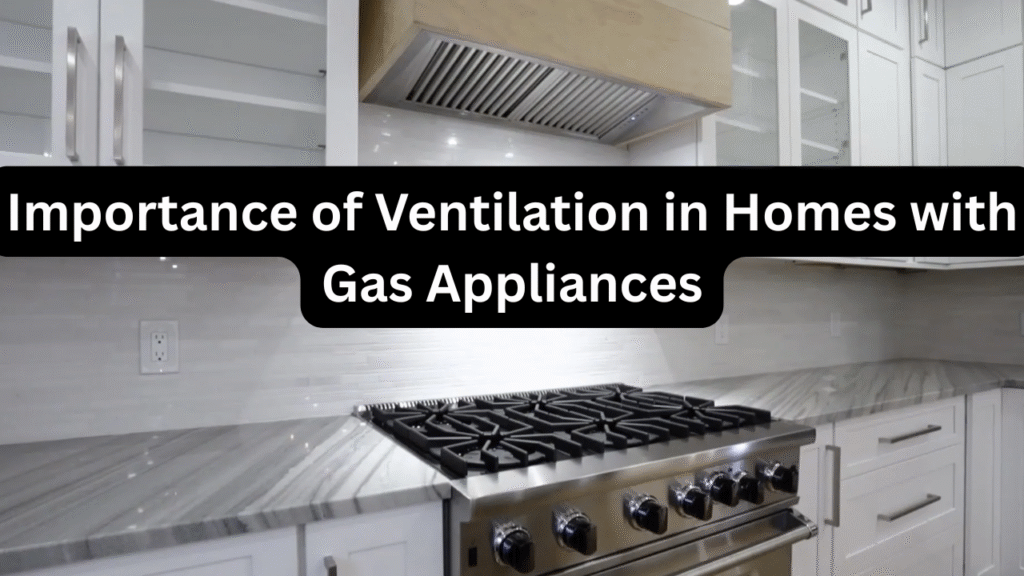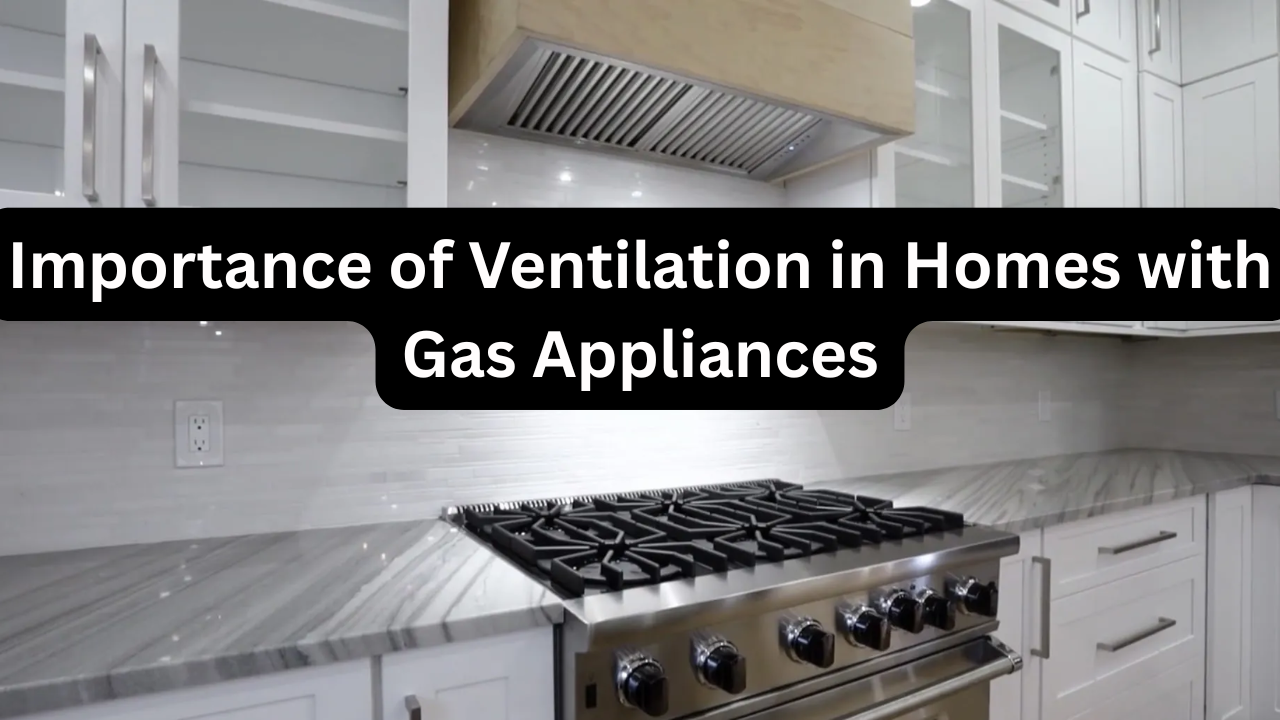
Gas appliances such as heaters, stoves, and water heaters provide efficient and reliable comfort for many households. However, while they offer convenience, they also produce byproducts like carbon monoxide (CO), nitrogen dioxide (NO₂), and water vapor. Without proper ventilation, these gases can accumulate indoors, creating serious health hazards. Understanding why ventilation is essential — and how to maintain it — is key to keeping your home safe.
Why Ventilation Matters with Gas Appliances
Gas appliances rely on combustion, a process that consumes oxygen and produces exhaust gases. Good ventilation serves two crucial purposes:
- Provides fresh air for combustion – Ensures the appliance works efficiently.
- Removes harmful gases – Prevents toxic buildup inside the home.
Without adequate airflow, you risk breathing harmful pollutants, experiencing moisture-related damage, and even facing life-threatening situations like CO poisoning.
Key Benefits of Proper Ventilation
1. Reduces Carbon Monoxide Risks
CO is colorless and odorless, making it impossible to detect without a monitor. Ventilation helps remove it before it reaches dangerous levels.
2. Prevents Moisture Buildup
Gas combustion produces water vapor. Without ventilation, this moisture can lead to mold growth and structural damage.
3. Improves Indoor Air Quality
Ventilation flushes out not only combustion gases but also indoor pollutants, creating a healthier environment.
4. Enhances Appliance Efficiency
A well-ventilated space allows appliances to burn fuel completely, reducing waste and energy costs.
5. Complies with Safety Standards
Many building codes require specific ventilation for gas appliances to meet legal safety requirements.
Common Ventilation Methods for Homes with Gas Appliances
1. Natural Ventilation
Relies on open windows, vents, and airflow through the home to bring in fresh air and remove stale air.
2. Mechanical Ventilation
Uses exhaust fans, duct systems, or whole-house ventilation units to actively circulate and replace air.
3. Direct Venting
Appliances vent directly outdoors through sealed pipes, drawing in outside air for combustion and exhausting gases safely.
Signs of Poor Ventilation
- Condensation on windows and walls
- Lingering smells from gas appliances
- Soot buildup near appliances
- Frequent headaches or dizziness indoors
- Yellow or flickering flames instead of blue
These indicators should be addressed immediately to avoid long-term hazards.
Overview Table
| Benefit | Why It Matters | Impact on Home |
|---|---|---|
| CO prevention | Avoids life-threatening gas exposure | Keeps family safe |
| Moisture control | Prevents mold and structural damage | Extends home lifespan |
| Better air quality | Removes pollutants and allergens | Healthier indoor environment |
| Energy efficiency | Ensures complete fuel combustion | Reduces energy bills |
| Code compliance | Meets building safety regulations | Avoids legal issues |
Table: Ventilation Solutions for Different Gas Appliances
| Appliance Type | Best Ventilation Method | Extra Safety Tip |
|---|---|---|
| Gas stove | Range hood with outdoor exhaust | Clean filters monthly |
| Gas heater (flued) | Direct venting outdoors | Install CO detectors nearby |
| Gas water heater | Mechanical venting | Check vent pipes annually |
| Portable gas heater | Use only in ventilated rooms | Keep a window slightly open during use |
| Gas fireplace | Direct or balanced flue system | Have yearly professional inspections |
How to Maintain Good Ventilation
- Check vents and flues regularly – Make sure they’re free from blockages like dust, nests, or debris.
- Test exhaust fans – Ensure they are effectively pulling air outside, not just recirculating indoors.
- Install carbon monoxide detectors – These act as an early warning system for ventilation failures.
- Schedule annual inspections – Certified technicians can spot problems before they become dangerous.
- Avoid sealing your home too tightly – Modern insulation is great, but allow some airflow for safety.
Risks of Ignoring Ventilation
Failing to maintain proper ventilation can lead to:
- Chronic health problems from inhaling pollutants.
- Increased risk of gas leaks going undetected.
- Moisture damage requiring costly repairs.
- Reduced lifespan of gas appliances due to poor combustion.
Emergency Steps if Ventilation Fails
If you suspect poor ventilation or gas buildup:
- Turn off the appliance immediately.
- Open all windows and doors.
- Leave the building if you feel dizzy or lightheaded.
- Call emergency services or a qualified gas technician.
- Do not use the appliance again until cleared by a professional.
Conclusion
Gas appliances can be safe, efficient, and cost-effective — but only when used with proper ventilation. By understanding the importance of airflow, recognizing the signs of poor ventilation, and using the right systems for each appliance, you can protect your family’s health and home. Regular maintenance, CO detection, and professional inspections are your best defenses against hidden dangers.
3 One-Line FAQs
Q1: Why do gas appliances need ventilation?
A1: Ventilation removes harmful gases and provides oxygen for proper combustion.
Q2: Can poor ventilation cause carbon monoxide poisoning?
A2: Yes, without proper airflow, CO can build up to dangerous levels indoors.
Q3: How often should ventilation systems be checked?
A3: At least once a year by a qualified technician.

